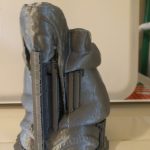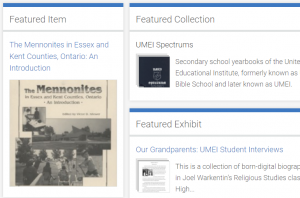I finally had a chance to start experimenting with 3d printing in 2017.
I’ve perfected skimming Thingiverse for things to print and I’ve got the hang of slicing and generating support material, brims, and G-code.
Waiting is hard and the whole thing can get pretty frustrating when prints fail – which, unfortunately, is often.
My design skills are still pretty limited: I can scale designs up or down, and I’m getting better at predicting whether a print will succeed in Slic3r before loading the filament. I’m also pretty good at cleaning the nozzle end (when filment jams) and the print bed (when prints don’t stick).
It’s kind of exciting to see what’s being done in the museum world — I’m especially excited about the potential for things like Museum in a Box.
- 3d printed shark clip on print bed with brim
- 3d printed Inuit woman showing printer supports
- 3d printed octopus planter for a succulent
- 3d printed turtle with spikey top




